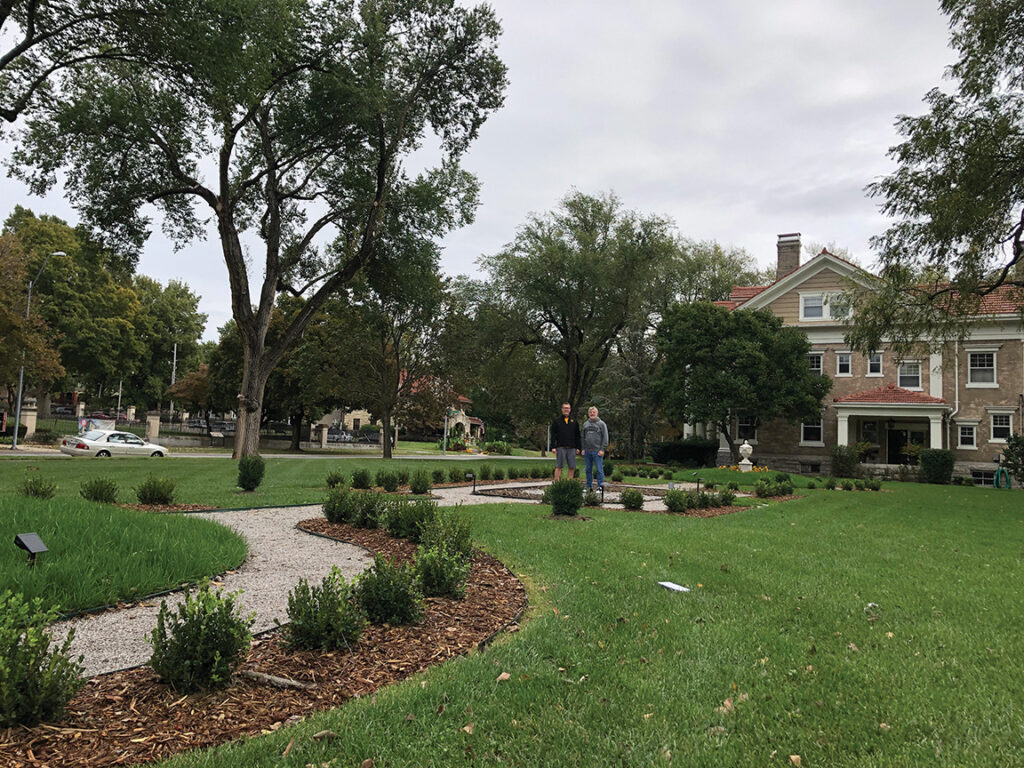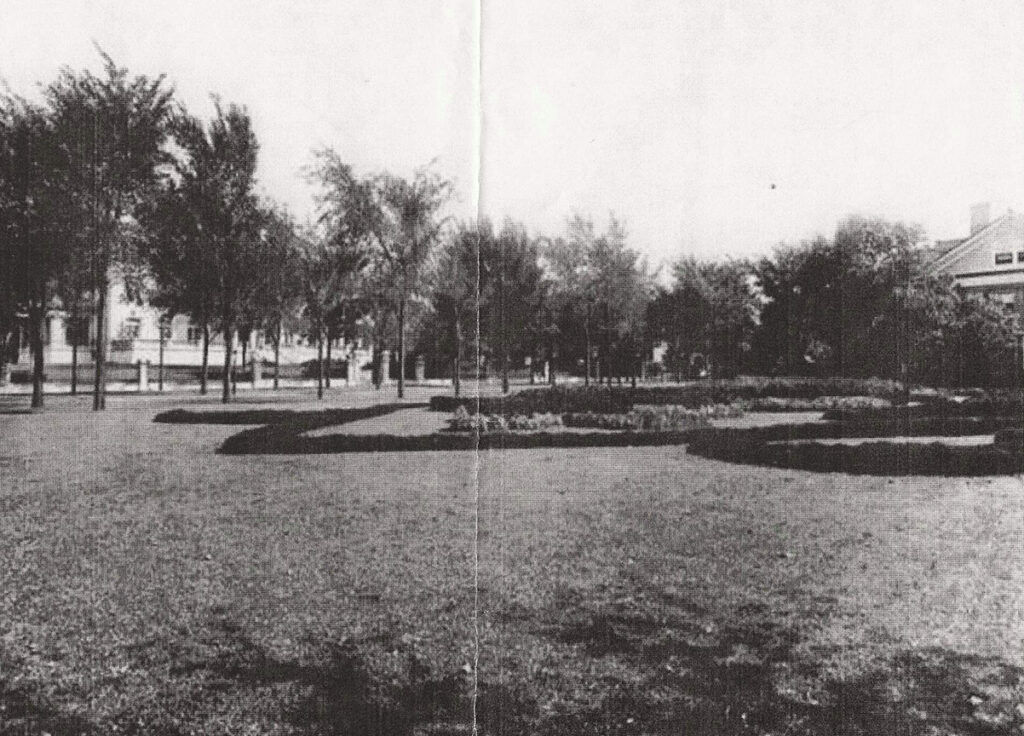
Dorri Partain
Contributor
Situated across from the Kansas City Museum, occupants of the historic Stevens House at 3223 Gladstone Blvd. have long had a front yard view of Robert A. Long’s Corinthian Hall. Now the view from the museum will include the return of the formal gardens that Long had once planted west of the Stevens House to view from his front yard, thanks to the vision of Jeff Zumsteg and Jeff Linville, current owners of the Stevens House.
Built in 1902 for prominent lawyer Edward A. Stevens, the Colonial Revival-style home predates the Long’s acquisition of the properties selected for his estate. Long’s desire was to have the entire block across from Corinthian Hall for an extension of the formal gardens surrounding his stately home, including the property where the Stevens’ home already stood.
After purchasing the vacant lot west of the Stevens’ home, he then tried on several occasions to purchase the home with the intention of demolishing it and creating a block-long formal garden to face Corinthian Hall. Mrs. Stevens, then a widow with several young children, refused his offers. In retaliation, after planting the gardens on his property, a large hedge was planted to block Mrs. Stevens’ view of the garden just outside her west entrance.
“To me, the story of this land is the coolest story,” said Zumsteg in a 2017 interview when his home was granted the status of being placed on the National Register of Historic Places. “In 1902, for a woman to tell any man, ‘no,’ – especially to the world’s richest lumber baron – to be told no on several occasions, he was pissed.”
When Long’s daughters donated the mansion to the City for a museum in 1939, the property across the street became City property, as well, and remained so until Zumsteg had the chance to purchase it during an online auction 11 years ago. By then, there was no trace that the garden had even existed.
The idea to return what has just been lawn for decades to a formal garden was hatched when a photo from 1916 was found in the archives of the Kansas City Museum.

“The museum was just closing for renovations when I had purchased the house, it’s never been open since I moved here from Atlanta in 2007. Christopher Leitch (museum director at that time) found it and showed it to me,” Zumteg recalled. “We don’t have much of a backyard, it’s like, back door then a carriage house. So this area is really where we can relax outdoors, and entertain.”
With the absence of a full-time gardener like Long once employed, Linville and Zumsteg have done most of the work themselves, breaking up the labor-intensive project into various steps. Once the layout was completed by landscapers, shipments of plants, leveling the ground, and ordering the garden ornaments were spaced out over several months.
Work began in July, and was finalized with the installation of six cubic feet of mulch.
“We decided we were done (hauling) with the wheelbarrow,” Linville said.
Instead, the mulch was blown into place around the bushes, saving hours of labor. The gravel for the walking path was also laid down by a landscape company, but Linville and Zumsteg planted all the bushes, placed the finials, and planted the grass on their own.
While Linville had posted on Facebook looking for willing volunteers to help, “We ended up doing it all ourselves, no volunteers,” he said.
The centerpiece fountain, which measures eight feet wide and seven feet tall, has been selected, but is now backordered due to fabrication delays. The garden’s layout is symmetrical to the Stevens house and the museum across the street, measuring 140 feet in length, with lighted walking paths. Two statuary finials complement the center fountain area on each end, while the garden is bordered by 114 boxwood bushes. Next spring, new annuals will provide a burst of color around the finials and fountain.
While the historic photo shows a French-style garden, Linville remarked, “I didn’t like it. We took a trip to Newport, Rhode Island, earlier this year just to tour gardens. I designed this to complement our house, so it’s more Colonial, if I have to define the style.”
Barring any further delays, the fountain is expected to arrive sometime in December.

















